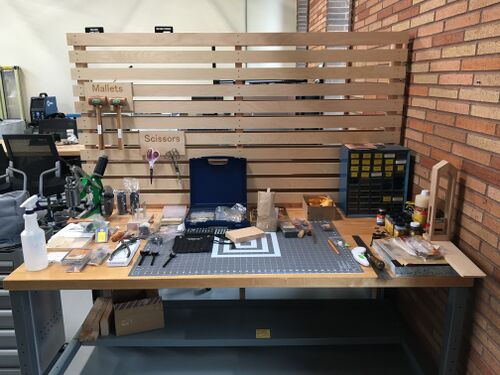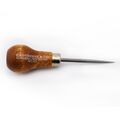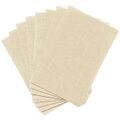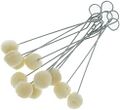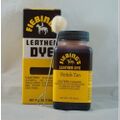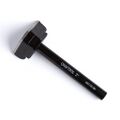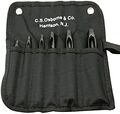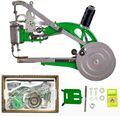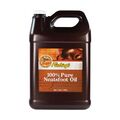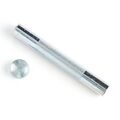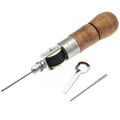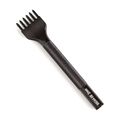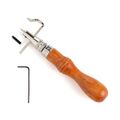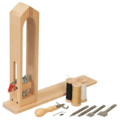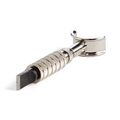Difference between revisions of "Leatherworking Station"
| Line 100: | Line 100: | ||
====General Procedure==== | ====General Procedure==== | ||
| + | Keep in mind that a little leather dye goes a long way; start with super light and thin coats. Avoid drenching your leather workpiece in the dye as this can produce some unwanted results (like your blue dye turning copper-colored). | ||
==Safety== | ==Safety== | ||
Revision as of 02:48, 17 February 2022
Make: Various
Model: Various
Serial Number: Various
Ace: Dane Ziegler (dziegler22@georgefox.edu).
Location: The Vault
Description
The Leatherworking Station
Documentation
Terminology
Vegetable-tanned leather is tanned with natural vegetable tannins to alter the protein structure of the hide, causing it to become leather. This type of leather typically takes a longer amount of time to create. Without any dye or oil, vegetable-tanned leather has a light tan color. It is considered higher quality in comparison to chrome-tanned leather. Approximately 10% of all leather is vegetable-tanned.
Chrome-tanned leather uses chemicals to tan and is a faster, less costly process. Chrome-tanned leather comes in a large variety of colors and is often less stiff than untreated vegetable-tanned leather. Approximately 90% of all leather is chrome-tanned. Do not laser cut chrome-tanned leather.
Veg tan leather is typically thicker and more durable, while chrome tanned leather is thin and less durable.
Awl - An awl is a tool with a metal point used for marking, piercing, punching, or sewing leather.
Burnishing Cloth - A canvas-like material that will burnish (to seal, smooth, and make shiny through rubbing friction) the edges of your leather workpiece. These can also remove char after using a laser engraver.
Wood Burnisher - A wooden piece with grooves that is used to smooth and harden the edges of leather through applied friction and pressure.
Dobbers - Dobbers are used to apply oil or dye to your leather workpiece.
Leather Dye - Leather dye will stain your vegetable-tanned leather. We have a variety of colors available.
Edge Beveler - An edge beveler is a tool with a metal blade that is used to remove the square corners from the edges of leather goods.
Maul - A leather maul is a striking tool used for stamping, tooling, setting rivets, and more. It is made of a head and a handle, similar to a hammer and mallet.
Pricking Iron and Chisel - Pricking irons and chisels are tools that are used for marking and creating holes in leather. They are built with equally spaced metal points.
Punch - A leather punch is a hole punch specifically for making holes in leather. They are great for setting rivets or making holes in belts and collars.
Skiver - A leather skiver is a metal tool used to remove and shave thin layers of leather material off of the surface.
Stamp - Leather stamps are made of metal and are used to create designs on your leather’s surface.
Cutting Mat - Before cutting your leather with a utility blade or rotary cutter, set up your work surface with a cutting mat to protect the table.
Training
Operation
There are a wide variety of videos on ring making. The basic process is composed of 4 main steps:
Demonstration
Make a small keychain with a rivet or snap.
General Procedure
Keep in mind that a little leather dye goes a long way; start with super light and thin coats. Avoid drenching your leather workpiece in the dye as this can produce some unwanted results (like your blue dye turning copper-colored).
Safety
Insert text
Certification
Troubleshooting
Maintenance
General maintenance
Insert text
Specific Maintenance Tasks
| Maintenance Procedure | Frequency | Done By |
|---|---|---|
| Sample | Sample | Sample |
